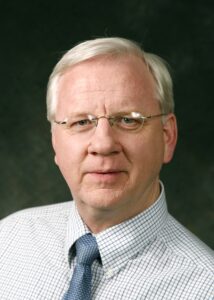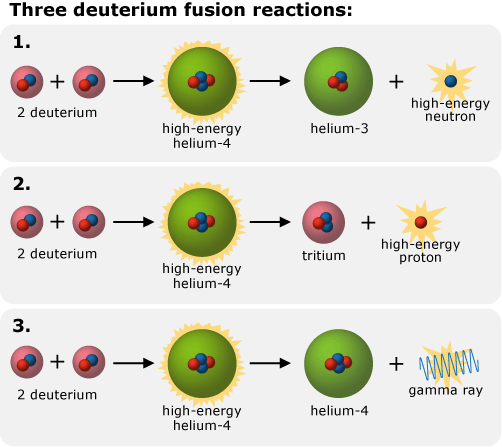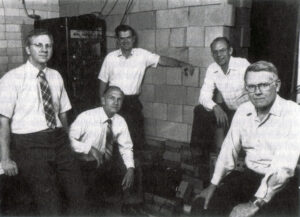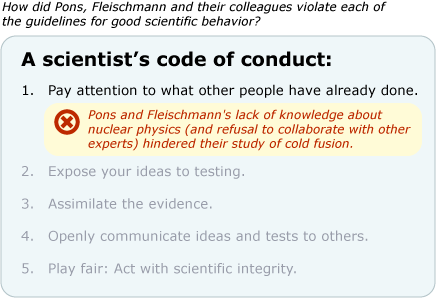
With promising preliminary results to back their cold fusion hypothesis, Pons and Fleischmann applied for a government grant to get funds for further experiments. As part of the grant process, Pons and Fleischmann’s proposal had to go through peer review. One of the reviewers was Steven Jones, a nuclear physicist at Brigham Young University, just 50 miles away. As it happened, Jones and a group of collaborators were working on a similar experiment but were studying a different line of evidence. While Pons and Fleishmann were concentrating on detecting the heat that would be produced by fusion, Jones’ group was looking for another sign of fusion — neutrons.
Nuclear theory — the theory of how protons and neutrons interact — explains how fusion works and generates many expectations about what we should observe when fusion actually happens. According to nuclear theory, deuterium atoms fuse and release energy in a two-step process:
- The two deuterium atoms unite to form a single atom of helium-4 (helium with two protons and two neutrons).
- This helium-4 atom has a lot of energy — so much energy that it is unstable. The unstable atom quickly discharges some of this energy in one of three ways: releasing a neutron, proton, or gamma ray (a type of electromagnetic radiation).

The fusion process — the formation of helium-4 and the subsequent energy release — is expected to generate a great deal of heat. Furthermore, nuclear theory tells us how much of each fusion product we should expect to observe: for a given amount of deuterium undergoing fusion, we should see the production of about equal numbers of protons and neutrons and a much smaller number of gamma rays. The heat, neutrons, and helium-4 could all have been detected by equipment available at the time. That made at least three lines of evidence available to shed light on whether or not fusion was occurring. Detecting these three products in the appropriate amounts would have been strong evidence in favor of cold fusion.

Using a brand new, state-of-the-art neutron detector, Jones’ team had found evidence of a small number of neutrons coming from their fusion cell. Jones interpreted this as evidence for fusion. Despite this conceptual agreement that cold fusion is possible, the details of Jones’ results did not mesh with Pons and Fleischmann’s findings. The amount of fusion Jones thought he was detecting was so minute that it had no practical application — whereas Pons and Fleischmann’s results indicated that fusion cells could be used as an energy source, one day fueling entire power plants.

Since they were seeking different lines of evidence for the same phenomenon, Jones asked the funding agency, the United States Department of Energy, to inform Pons and Fleischmann about his research — and suggest a collaboration. Scientifically speaking, collaborating was a good idea. Scientists are expected to understand the current research and theory in their fields in order to ensure that their work is up-to-date and takes recent advances into account. Though Pons and Fleischmann had extensive training in chemistry, neither of them had studied nuclear physics, which was Jones’ area of expertise. Additional physics knowledge would have been especially helpful in this case because the hypothesis about fusion occurring in palladium was so unconventional. It went against the grain of well-supported physical theories — which suggested that the deuterium atoms inside palladium wouldn’t get close enough to one another to fuse. Both groups had relevant knowledge that the other lacked. By collaborating, they would broaden their understandings of the problem, techniques, and evidence — and would be better able to judge whether or not fusion was occurring.
Unfortunately, the benefits of collaboration were not enough to persuade Pons and Fleischmann to work with Jones’ group. Pons and Fleischmann were convinced that Jones had used details gathered from their grant application to get his experiment running. They refused to collaborate — and in so doing, missed an opportunity to expand the expertise of their team.

